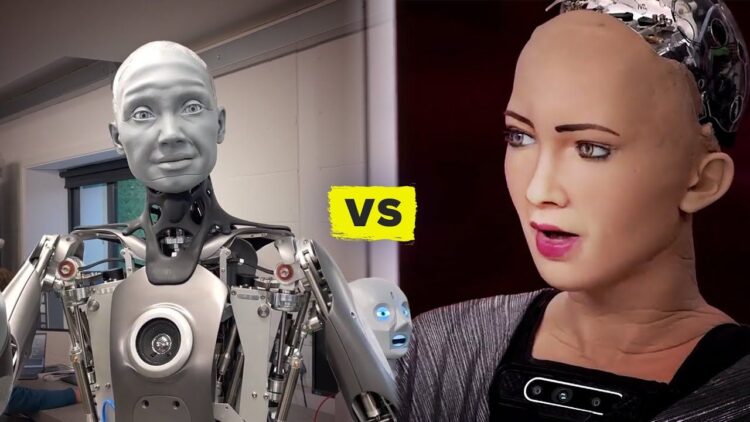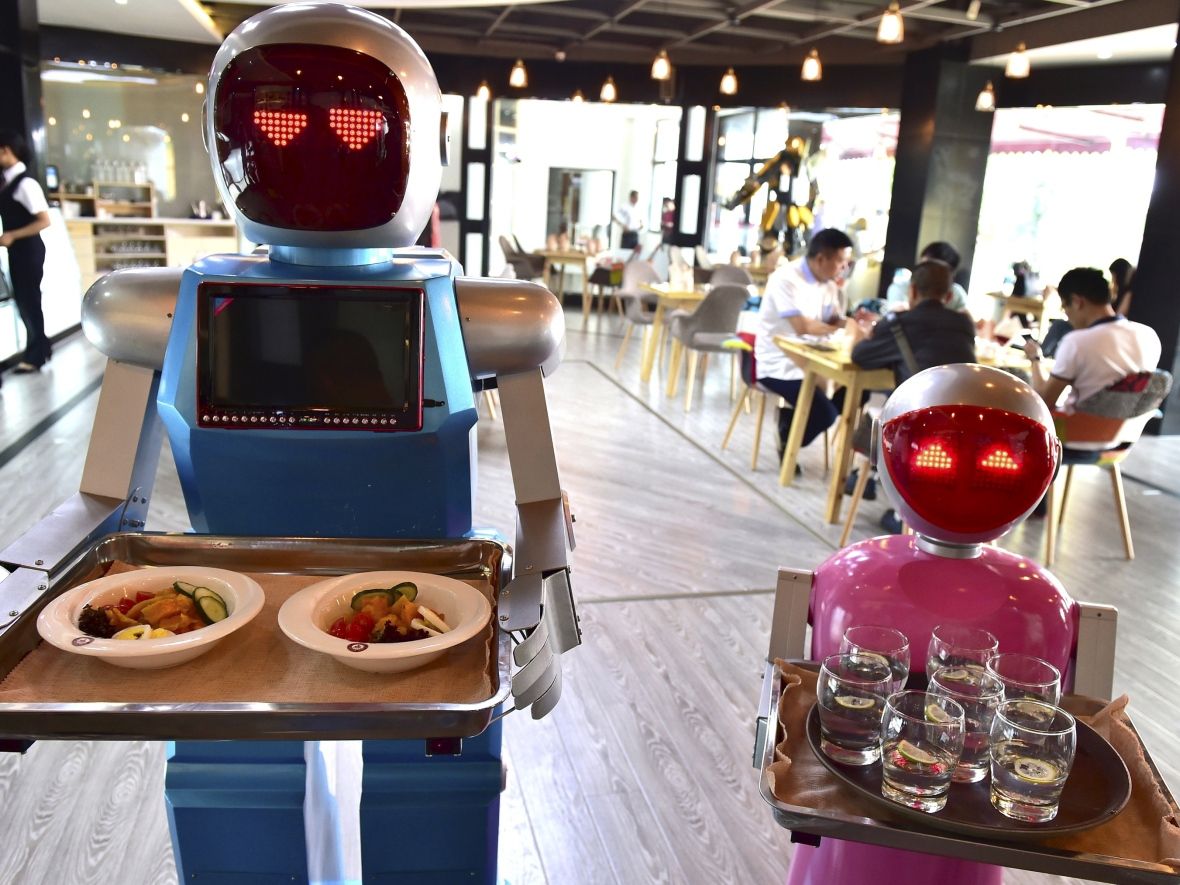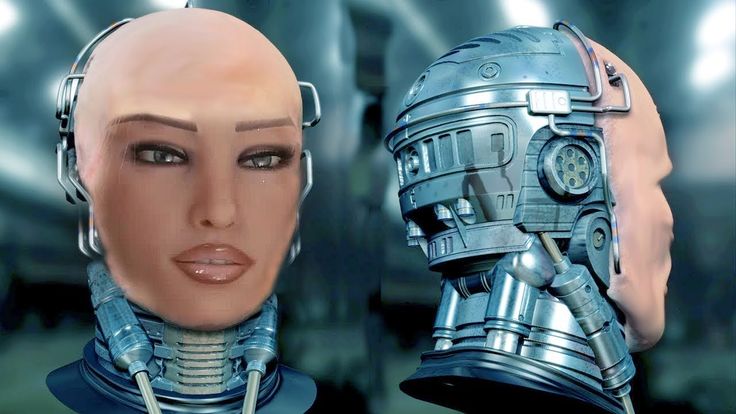Artificial Intelligence (AI) is no longer a futuristic concept confined to science fiction; it’s a profound, pervasive force actively reshaping the fabric of our daily existence. From the personalized recommendations that subtly guide our online choices to the sophisticated algorithms powering our smart devices and enhancing our professional capabilities, AI has seamlessly woven itself into the tapestry of modern life. This isn’t merely an incremental technological advancement; it’s a fundamental paradigm shift that’s redefining convenience, productivity, safety, and even creativity. AI is not just coming; it’s here, and it’s revolutionizing our daily routines in ways that were unimaginable just a few years ago. Its impact is immediate, tangible, and growing with astounding velocity, making it a critical subject to understand as we navigate this technologically advanced era.
Beyond the Hype
To truly grasp the magnitude of AI’s daily impact, it’s essential to look beyond the sensational headlines and understand its practical applications that are now integral to our lives. AI is not a single entity but a broad field encompassing various technologies, all designed to enable machines to perform tasks that typically require human intelligence.
A. The Evolution of Artificial Intelligence: From Theory to Application
AI has a rich history, evolving from theoretical concepts to tangible applications that touch almost every sector.
- Early Concepts and Symbolic AI (1950s-1980s): Initial AI research focused on symbolic reasoning, expert systems, and logic programming. The goal was to imbue computers with human-like reasoning abilities through predefined rules and knowledge bases. While foundational, these systems struggled with real-world complexity and ambiguity. Early examples include chess-playing programs and rudimentary natural language processing.
- Machine Learning Emergence (1980s-2000s): This era saw a shift towards machine learning (ML), where algorithms learn from data rather than being explicitly programmed. Subfields like decision trees, support vector machines, and early neural networks gained prominence. The focus shifted from ‘telling’ machines what to do to ‘showing’ them with data. This allowed for more adaptable systems but required significant human feature engineering.
- Deep Learning Revolution (2010s-Present): Fueled by vast amounts of data, powerful computing resources (GPUs), and breakthroughs in neural network architectures, deep learning (a subset of machine learning) truly propelled AI into the mainstream. This allowed AI to tackle highly complex tasks like image recognition, natural language understanding, and speech synthesis with unprecedented accuracy, leading to many of the daily applications we see today.
- Generative AI and Beyond (2020s and Future): The latest wave, particularly Generative AI, has captured public imagination. Models like Large Language Models (LLMs) and diffusion models can create new content—text, images, audio, video—that is often indistinguishable from human-created work. This pushes AI beyond analysis and prediction into the realm of creation, hinting at an even more transformative future.
B. The Pillars of AI: How It Works in Our World
The daily applications of AI are built upon several foundational technological pillars that operate in the background.
- Machine Learning (ML): This is the core engine, allowing systems to learn from data. When you get product recommendations, spam filters catch unwanted emails, or streaming services suggest your next show, ML algorithms are at work, analyzing patterns in vast datasets to make predictions or decisions.
- Natural Language Processing (NLP): NLP enables computers to understand, interpret, and generate human language. This is evident in voice assistants (Siri, Google Assistant, Alexa), translation services, sentiment analysis tools, and the sophisticated chatbots that manage customer service queries.
- Computer Vision (CV): CV allows machines to “see” and interpret visual information from the world. Facial recognition for phone unlocking, object detection in self-driving cars, medical image analysis, and even photo tagging on social media are all powered by computer vision.
- Robotics: While robotics primarily deals with the physical machines, AI provides the “brains.” AI enables robots to perceive their environment, navigate complex spaces, make autonomous decisions, and even learn new tasks, from industrial automation to domestic robot vacuums.
- Speech Recognition and Synthesis: The ability to convert spoken words into text and vice versa. This underpins all voice-controlled interfaces, dictation software, and the lifelike voices of AI assistants.
- Recommendation Systems: These pervasive AI systems analyze user preferences, past behavior, and item characteristics to suggest products, content, or services. They are central to e-commerce, streaming platforms, and social media feeds, subtly shaping our consumption habits.
AI’s Immediate Impact: Revolutionizing Our Daily Routines
AI’s integration into our lives is far from theoretical; it’s a present reality, reshaping how we work, communicate, consume, and even interact with our physical environment.
A. Enhancing Personal Productivity and Organization
AI tools are increasingly becoming our digital assistants, streamlining tasks and boosting efficiency in our personal and professional lives.
- Smart Assistants (Voice AI): Devices like Amazon Echo, Google Home, and Apple HomePod act as command centers for our homes. They set alarms, play music, answer questions, control smart home devices, and manage calendars, all through voice commands powered by advanced NLP and speech recognition. Our phones also come equipped with these powerful assistants.
- Email and Communication Filters: AI-powered spam filters prevent unwanted messages from cluttering our inboxes. AI also helps prioritize emails, suggests quick replies, and even corrects grammar and spelling in real-time, making communication more efficient.
- Calendar and Scheduling Tools: AI can analyze your schedule and preferences to suggest optimal meeting times, send reminders, and even automatically re-schedule appointments to avoid conflicts, reducing the mental load of organization.
- Personalized Content Curation: Streaming services (Netflix, Spotify), news apps, and social media feeds use AI to learn your preferences and curate content specifically for you. This means endless entertainment and information tailored to your tastes, though it also raises questions about filter bubbles.
- Navigation and Ride-Sharing Apps: AI algorithms power traffic prediction in navigation apps (Google Maps, Waze), suggesting optimal routes and alternative paths to avoid congestion. Ride-sharing services use AI to match riders with drivers, optimize routes, and predict surge pricing.
B. Transforming Health and Wellness
AI is making significant inroads into healthcare, from personal fitness to clinical diagnostics.
- Wearable Health Tech: Smartwatches and fitness trackers use AI to analyze heart rate, sleep patterns, activity levels, and even detect early signs of health issues, providing personalized wellness insights and alerts.
- Personalized Fitness and Nutrition Plans: AI-powered apps analyze your health data, goals, and dietary preferences to create customized workout routines and meal plans, adapting as you progress.
- Medical Diagnostics and Image Analysis: In clinical settings, AI assists radiologists in detecting subtle anomalies in X-rays, MRIs, and CT scans, often with greater speed and accuracy than the human eye. AI can also help diagnose diseases like cancer or retinopathy earlier.
- Drug Discovery and Development: AI accelerates drug research by sifting through vast datasets of chemical compounds, predicting molecular interactions, and simulating drug efficacy, dramatically shortening development cycles.
- Telemedicine and Remote Monitoring: AI-powered platforms are enhancing telemedicine by assisting with triage, analyzing patient symptoms, and enabling remote monitoring of vital signs for chronic conditions, making healthcare more accessible.
C. Revolutionizing Transportation and Mobility
The vision of smart, autonomous transportation systems is rapidly becoming a reality, largely due to AI.
- Autonomous Vehicles (Self-Driving Cars): AI is the brain of self-driving cars, enabling them to perceive their environment (using computer vision, LiDAR, radar), navigate, make real-time decisions, and react to unpredictable road conditions, promising enhanced safety and efficiency.
- Traffic Management Systems: AI optimizes urban traffic flow by analyzing real-time data from sensors and cameras, adjusting traffic light timings, and predicting congestion hotspots, reducing commute times and fuel consumption.
- Logistics and Delivery Optimization: AI algorithms optimize delivery routes for companies like Amazon, UPS, and local food delivery services, minimizing travel time, fuel usage, and delivery costs.
- Ride-Sharing Enhancements: Beyond basic matching, AI predicts demand patterns, optimizes driver positioning, and dynamically adjusts pricing to balance supply and demand in ride-sharing networks.
D. Elevating Entertainment and Creativity
AI is not just about logic and efficiency; it’s also a powerful tool for creativity and entertainment.
- Generative Art and Music: AI models can create original artworks, compose music in various styles, and even write poetry or scripts, blurring the lines between human and machine creativity.
- Deepfake Technology (Ethical Concerns Aside): While controversial, deepfake technology showcases AI’s ability to generate highly realistic synthetic media, including video and audio, with significant implications for entertainment, education, and disinformation.
- Video Game AI: AI powers non-player characters (NPCs) in video games, creating more realistic and challenging opponents or companions. AI also assists in generating game environments and storylines.
- Personalized Entertainment Recommendations: As mentioned, AI’s recommendation engines are pivotal to platforms like Netflix, Spotify, and YouTube, ensuring users are constantly fed content aligned with their evolving tastes, driving engagement.
AI’s Impact on the World of Work and Business
Beyond individual routines, AI is fundamentally transforming how businesses operate, increasing productivity, driving innovation, and creating new industries.
A. Automating Repetitive and Mundane Tasks
One of AI’s most immediate impacts is the automation of tasks that are repetitive, rule-based, and time-consuming, freeing up human workers for more complex and creative endeavors.
- Robotic Process Automation (RPA): AI-powered RPA bots can mimic human interactions with digital systems, automating tasks like data entry, invoice processing, customer onboarding, and report generation across various industries.
- Customer Service and Chatbots: AI-driven chatbots and virtual assistants handle a vast volume of customer inquiries, providing instant support, answering FAQs, and triaging complex issues to human agents, improving customer satisfaction and reducing operational costs.
- Supply Chain Optimization: AI analyzes vast datasets related to logistics, inventory, and demand to optimize supply chains, predict disruptions, manage warehouse operations, and improve delivery efficiency.
- Financial Fraud Detection: AI algorithms analyze transactional data in real-time to detect anomalous patterns indicative of fraud, significantly reducing financial losses for banks and consumers.
B. Powering Advanced Analytics and Business Intelligence
AI’s ability to process and interpret massive datasets is revolutionizing decision-making in businesses.
- Predictive Analytics: AI models forecast future trends, from sales figures and market demand to equipment failures and customer churn, allowing businesses to make proactive, data-driven decisions.
- Personalized Marketing and Sales: AI analyzes customer data to segment audiences, predict purchasing behavior, and deliver highly personalized marketing campaigns and sales pitches, leading to higher conversion rates.
- Market Research and Trend Spotting: AI can rapidly analyze vast amounts of text (social media, news, reports) to identify emerging market trends, consumer sentiment, and competitive landscapes, providing invaluable business intelligence.
- HR and Talent Management: AI assists in recruiting by screening resumes, identifying qualified candidates, and even predicting job performance. It also helps in workforce planning, talent development, and employee retention strategies.
C. Enabling Innovation and New Product Development
AI is not just optimizing existing processes; it’s also a catalyst for entirely new products, services, and business models.
- AI-as-a-Service (AIaaS): Cloud providers offer AI capabilities as managed services, allowing even small businesses to leverage sophisticated AI models without massive upfront investments in infrastructure or specialized talent.
- Smart Products and IoT Devices: AI is embedded in smart home devices, industrial sensors, and connected vehicles, creating entirely new product categories that offer enhanced functionality and personalized experiences.
- Research and Development Acceleration: AI assists scientists and engineers in simulating complex experiments, analyzing vast research data, and discovering new materials or molecular structures, speeding up R&D across fields like materials science and pharmaceuticals.
- Creative Industries Transformation: AI is becoming a co-creator in fields like graphic design, advertising, and content creation, generating ideas, drafting copy, and producing visual assets, augmenting human creativity.
Challenges and Ethical Considerations in AI’s Rapid Ascent
Despite its transformative benefits, the rapid integration of AI into daily life also brings forth significant challenges and crucial ethical considerations that demand thoughtful navigation.
A. Privacy and Data Security Concerns
AI systems thrive on data, often vast quantities of personal and sensitive information. This raises significant privacy and data security concerns.
- Mass Data Collection: AI’s reliance on large datasets means companies collect extensive information about individuals, raising questions about what data is collected, how it’s stored, and who has access to it.
- Surveillance Risks: Facial recognition, behavioral analytics, and other AI applications can be used for pervasive surveillance by governments or corporations, eroding personal freedoms.
- Bias in Data: If the training data for AI models is biased (e.g., predominantly representing certain demographics), the AI system will learn and perpetuate those biases, leading to unfair or discriminatory outcomes in areas like hiring, lending, or criminal justice.
- Algorithmic Bias: Beyond data, the algorithms themselves can inadvertently embed human biases if not carefully designed and tested, leading to systemic discrimination and exacerbating existing societal inequalities.
B. Job Displacement and Workforce Transformation
A significant concern is the potential for AI-driven job displacement, particularly for roles involving repetitive or routine tasks.
- Automation of Routine Tasks: AI and robotics are increasingly capable of performing tasks previously done by humans in manufacturing, customer service, and administrative roles.
- Need for Reskilling: While some jobs may be lost, new ones will emerge (e.g., AI trainers, data scientists, AI ethicists). However, a large-scale reskilling and upskilling of the existing workforce is necessary to prepare for these new roles, which can be a slow and challenging process.
- Economic Inequality: If the benefits of AI are not widely distributed, it could exacerbate economic inequality, creating a divide between those whose skills are augmented by AI and those whose jobs are automated away.
C. Ethical Dilemmas and Accountability
As AI systems become more autonomous and make decisions with real-world consequences, complex ethical dilemmas and questions of accountability arise.
- “Black Box” Problem: Many advanced AI models, especially deep learning networks, operate as “black boxes,” meaning it’s difficult to understand why they make a particular decision. This lack of transparency poses challenges for accountability, auditing, and trust.
- Autonomous Decision-Making: When AI systems make critical decisions (e.g., in self-driving cars, medical diagnostics, or legal contexts), who is responsible if something goes wrong? The developer, the user, the AI itself?
- Misinformation and Deepfakes: Generative AI can create highly convincing but fake images, audio, and video (deepfakes), raising serious concerns about misinformation, erosion of trust, and manipulation, particularly in political and social spheres.
- Moral Judgments: Should AI be programmed with moral frameworks? How do we embed human values into algorithms that may encounter ethical dilemmas (e.g., a self-driving car’s decision in an unavoidable accident)?
D. Security Vulnerabilities and Malicious Use
The power of AI can be exploited for malicious purposes, and AI systems themselves can become targets.
- AI-Powered Cyberattacks: Attackers can use AI to automate and scale cyberattacks, making them more sophisticated and harder to detect.
- Adversarial Attacks: AI models are susceptible to adversarial attacks, where subtle, imperceptible changes to input data can cause the AI to make incorrect classifications (e.g., making a stop sign undetectable to a self-driving car).
- Weaponization of AI: The development of autonomous weapons systems raises profound ethical and security concerns about the potential for AI to make life-and-death decisions without human intervention.
E. Over-reliance and Loss of Human Skills
As AI takes over more cognitive tasks, there’s a risk of humans becoming overly reliant on these systems, potentially leading to a degradation of critical thinking skills, problem-solving abilities, and even memory. Striking the right balance between AI assistance and maintaining human cognitive capabilities is crucial.
Best Practices for Navigating an AI-Powered World
To harness AI’s immense potential while mitigating its risks, individuals, businesses, and governments must adopt proactive and responsible strategies.
A. Prioritize AI Literacy and Education
Investing in AI literacy and education is fundamental.
- Public Awareness: Educate the general public about how AI works, its capabilities, its limitations, and its ethical implications.
- Workforce Reskilling: Implement programs to reskill and upskill workers whose jobs may be impacted by automation, focusing on skills that are complementary to AI (e.g., creativity, critical thinking, emotional intelligence, AI operations, data science).
- Curriculum Integration: Integrate AI concepts into educational curricula from primary school to higher education to prepare future generations for an AI-powered world.
B. Develop Ethical AI Guidelines and Regulation
Establishing robust ethical AI guidelines and regulatory frameworks is crucial to ensure AI is developed and deployed responsibly.
- Transparency and Explainability: Push for “explainable AI” (XAI) models, where the decision-making process of AI is understandable and auditable, especially in critical applications.
- Fairness and Bias Mitigation: Implement rigorous testing and auditing processes to identify and mitigate bias in AI datasets and algorithms. Develop techniques for debiasing AI models.
- Accountability Frameworks: Clearly define who is responsible when AI systems cause harm, establishing legal and ethical accountability mechanisms.
- Privacy by Design: Incorporate privacy considerations into the very design of AI systems, minimizing data collection, ensuring secure storage, and adhering to privacy regulations (e.g., GDPR).
C. Focus on Human-AI Collaboration (Augmentation)
Instead of viewing AI as a replacement for humans, focus on human-AI collaboration and augmentation.
- AI as an Assistant: Design AI tools to assist and augment human capabilities, taking over mundane tasks while freeing humans for more strategic, creative, and empathetic work.
- Decision Support Systems: Leverage AI to provide insights and recommendations that inform human decision-making, rather than making autonomous decisions in high-stakes scenarios.
- Explainable Outputs: Ensure AI outputs are presented in a way that humans can understand, validate, and override if necessary.
D. Implement Robust AI Security Measures
Protecting AI systems from attack and misuse is paramount.
- Secure AI Development Lifecycle: Integrate security into every stage of AI development, from data collection to model deployment.
- Adversarial Robustness: Develop AI models that are robust against adversarial attacks, making them less susceptible to malicious manipulation.
- Regular Audits: Continuously audit AI systems for vulnerabilities, biases, and performance drift.
- Responsible Deployment: Carefully consider the risks before deploying AI in critical infrastructure or high-stakes environments.
E. Encourage Interdisciplinary Research and Dialogue
The complexities of AI require a collaborative approach involving technologists, ethicists, sociologists, policymakers, and legal experts. Foster interdisciplinary research and ongoing public dialogue to understand AI’s societal impact and collectively shape its future.
The Future Trajectory: AI’s Next Frontier in Daily Life
The current revolution is just the beginning. AI’s future integration into daily life promises even more profound transformations, pushing the boundaries of what’s possible.
A. Hyper-Personalization and Predictive Assistance
Expect AI to become even more deeply integrated into our individual lives, offering hyper-personalized experiences and proactive assistance.
- Context-Aware AI: AI systems will understand our context (location, emotional state, current task) with greater nuance, offering truly predictive and tailored assistance.
- Personalized Digital Twins: AI will power digital replicas of ourselves, learning our habits and preferences to manage our digital lives, from scheduling to information filtering.
- Proactive Health Interventions: AI will move beyond just monitoring to actively predict health risks and suggest preventative measures based on real-time biometric and environmental data.
B. Ambient AI and Invisible Interfaces
AI will become increasingly ambient and integrated into our surroundings, fading into the background while providing seamless utility.
- Ubiquitous Sensors: Environments will be saturated with sensors, feeding data to AI systems that anticipate our needs without explicit commands.
- Voice and Gesture Interfaces: Natural language and gesture control will become the primary modes of interaction, replacing screens and keyboards for many tasks.
- Smart Homes and Cities: AI will orchestrate complex interactions within smart homes (energy optimization, security, comfort) and eventually entire smart cities (traffic, utilities, public safety) seamlessly.
C. Advanced Robotics and Humanoid Integration
Robotics will become more sophisticated, physically interacting with our daily environment.
- Domestic Robots: Robots will perform more complex household chores, provide companionship, and assist the elderly or those with disabilities.
- Service Robots: Robots will become common in retail, hospitality, and healthcare, performing tasks like cleaning, delivery, and basic patient care.
- Collaborative Robots (Cobots): In workplaces, cobots will work even more closely and safely alongside humans, augmenting their physical capabilities and automating tedious tasks.
D. Augmented Reality (AR) and Mixed Reality (MR) AI
AI will merge with AR/MR to create truly immersive and intelligent digital overlays on our physical world.
- Intelligent AR Assistants: AI will populate AR environments, providing context-aware information, guiding us through tasks, or enhancing our perception of reality.
- Interactive Digital Twins in AR: Overlaying real-time Digital Twin data onto physical objects, allowing for intuitive remote inspection, maintenance, and interaction.
- Personalized Learning and Training: AR combined with AI will offer highly interactive and adaptive learning experiences, adjusting content based on individual progress and understanding.
E. AI in Creative and Expressive Arts
Generative AI will continue to push boundaries in creative domains.
- AI as a Creative Partner: AI will become an even more sophisticated tool for artists, musicians, writers, and designers, generating ideas, prototypes, and entire compositions in various styles, acting as a true creative collaborator.
- Personalized Entertainment Creation: AI could generate unique stories, music, or visual experiences tailored dynamically to individual preferences.
- Human-AI Co-evolution of Creativity: The interaction between human ingenuity and AI’s generative capabilities will lead to entirely new art forms and expressive mediums.
Conclusion
Artificial Intelligence is fundamentally and irrevocably revolutionizing our daily lives, transforming everything from how we communicate and work to how we learn, maintain our health, and experience entertainment. It acts as an invisible engine powering our digital interactions, a perceptive assistant streamlining our tasks, and a creative force pushing the boundaries of human expression. The shift is not in some distant future; it is unfolding with remarkable speed, integrating into the mundane and extraordinary aspects of our routines right now.
While the immense benefits—such as unprecedented efficiency, personalized experiences, and life-saving advancements—are undeniable, the rapid ascent of AI also compels us to confront critical challenges regarding privacy, bias, job transformation, and ethical governance. Navigating this new era requires a collective commitment to responsible development, transparent deployment, and continuous learning. By prioritizing human-AI collaboration, fostering AI literacy, and establishing robust ethical frameworks, we can ensure that this powerful technology serves humanity’s best interests, building a future that is not just more efficient, but also more equitable, innovative, and profoundly connected. The revolution is here, and our daily lives are its vibrant canvas.











